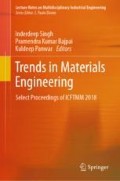Abstract
The function of non-covalent interactions in structure–property relationship of [ZnX4]2−-based inorganic–organic hybrid materials has been studied in a series of compounds which were examined and determined with XRD data. The XRD data have been used for computer-generated structural model through computational systems to compute the non-covalent bonds in order in ZnCl4, ZnBr4, ZnI4, and ZnF4 hybrids. The molecular structures have revealed that organic materials are held inside the inorganic components through non-covalent interactions by hydrogen donor-to-acceptor, hydrogen donor to ring centroid, within the halide groups and also within the metal–metal atoms of the compound to form the different structural motifs. The selected materials were analyzed for the predominance of the hyper-Raman and Infrared spectra modes of [ZnCl4]2− hybrids in comparison with the [ZnBr4]2−, [ZnI4]2−[ZnF4]2−, etc. types of hybrid derivatives are calculated through the fractional coordinates obtained from the structural data. These spectroscopic parameters indicate that such hybrid materials have optical properties.
Access this chapter
Tax calculation will be finalised at checkout
Purchases are for personal use only
References
Sharp, K.G.: Adv. Mater. 10, 1243 (1998)
Hedrick, J.L., Magbitang, T., Connor, E.F., Glauser, T., et al.: Chem. Europ. J. 8, 3308 (2002)
Kickelbick, G.: Hybrid Materials: Synthesis, Characterization and Applications. Wiley-VCH, Weinheim, Germany (2005)
Dinesh, J., Sanjay, K., Sridhar, B., Alvi, P.A., Ajit, K.: Mat. Chem. Phys. 207, 98 (2018)
Bikram, S., Atul, T., Mukesh, K., Sanjay, K., Dinesh, J.: Mat. Chem. Phys. 206, 34 (2017)
Brandenburg, K., Putz, H.: DIAMOND. Crystal Impact GbR, Bonn, Germany (1999)
Desiraju, G.R., Steiner, T.: The Weak Hydrogen Bond In Structural Chemistry and Biology. IUCr, UK (1999)
Author information
Authors and Affiliations
Corresponding author
Editor information
Editors and Affiliations
Rights and permissions
Copyright information
© 2019 Springer Nature Singapore Pte Ltd.
About this paper
Cite this paper
Kumar, A., Kumar, K., Jasrotia, D., Verma, S.K., Alvi, P.A. (2019). [ZnX4]2− [R]2+ Hybrid Materials: Structural and Optical Studies. In: Singh, I., Bajpai, P., Panwar, K. (eds) Trends in Materials Engineering. Lecture Notes on Multidisciplinary Industrial Engineering. Springer, Singapore. https://doi.org/10.1007/978-981-13-9016-6_11
Download citation
DOI: https://doi.org/10.1007/978-981-13-9016-6_11
Published:
Publisher Name: Springer, Singapore
Print ISBN: 978-981-13-9015-9
Online ISBN: 978-981-13-9016-6
eBook Packages: Chemistry and Materials ScienceChemistry and Material Science (R0)

